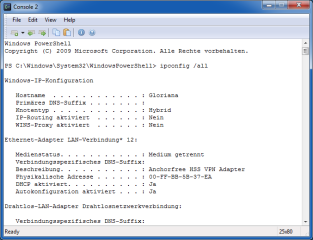

The link speed is usually reduced to the lowest possible speed to not waste power (e.g. This consumes a small amount of standby power, much less than normal operating power. In order for Wake-on-LAN to work, parts of the network interface need to stay on. There are some exceptions, though, and Wake-on-LAN can operate across any network in practice, given appropriate configuration and hardware, including remote wake-up across the Internet. The magic packet is sent on the data link layer (layer 2 in the OSI model) and when sent, is broadcast to all attached devices on a given network, using the network broadcast address the IP-address (layer 3 in the OSI model) is not used.īecause Wake-on-LAN is built upon broadcast technology, it can generally only be used within the current network subnet.
#Wake magic packet sender mac
If a magic packet is received that is directed to the device's MAC address, the NIC signals the computer's power supply or motherboard to initiate system wake-up, in the same way that pressing the power button would do. Powered-down or turned off computers capable of Wake-on-LAN will contain network devices able to "listen" to incoming packets in low-power mode while the system is powered down. The magic packet contains the MAC address of the destination computer, an identifying number built into each network interface card ("NIC") or other ethernet device in a computer, that enables it to be uniquely recognized and addressed on a network. WoL is implemented using a specially designed frame called a magic packet, which is sent to all computers in a network, among them the computer to be awakened. Principle of operation Įthernet connections, including home and work networks, wireless data networks and the Internet itself, are based on frames sent between computers. In April 1997, this alliance introduced the Wake-on-LAN technology. In October 1996, Intel and IBM formed the Advanced Manageability Alliance (AMA). 6.2 Waking up without operator presence.6 Other machine states and LAN wakeup signals.5.2 Ensuring the magic packet travels from source to destination.5.1 Creating and sending the magic packet.3.2 Interactions with network access control.You can also change it to any other combination that works for you. You can customize the script to check for - instead of : by replacing the. \\ Yes \\ No \\ Suspend \\ Help (default is "Y"): YĪnd then, to turn on my wife's machine was just You to the security risks described in the about_Execution_Policies help topic. Changing the execution policy might expose The execution policy helps protect you from scripts that you do not trust. PS D:\Documents\scripts> Set-ExecutionPolicy unrestricted You need to make sure you enable script execution in your PowerShell environment:

Write "Wake-On-Lan magic packet sent to $MACAddrString, length $($packet.Length)" \\ $UDPclient.Send($packet, $packet.Length)

Throw 'MAC address must be format xx:xx:xx:xx:xx:xx' $MACAddr = $macAddrString.split(':') | %\\ Param (\\$MACAddrString = $(throw 'No MAC addressed passed, please pass as xx:xx:xx:xx:xx:xx')) You just pass the MAC address in format xx:xx:xx:xx:xx:xx and it turns on the machine. After checking that the BIOS supported WOL, I made a note of the MAC address and created the PowerShell script below based on some snippets I found on the web. She uses a small laptop and remotes into her desktop computer, so shutting down the desktop was just a matter of creating a shortcut to shutdown /s /t 0 (She's on bed rest, pregnant with twins, and I got tired of going up there to turn it on ). I wanted a little script to send the magic packet to turn on my wife's desktop machine upstairs when she wants to use it. The target machine must support WOL, and you may need to configure whether the machine should boot normally or from the network when it's started via WOL. In a previous FAQ, I talked about the Wake On LAN (WOL) magic packet, which wakes a machine that's turned off by sending a packet with the machine's MAC address.


 0 kommentar(er)
0 kommentar(er)
